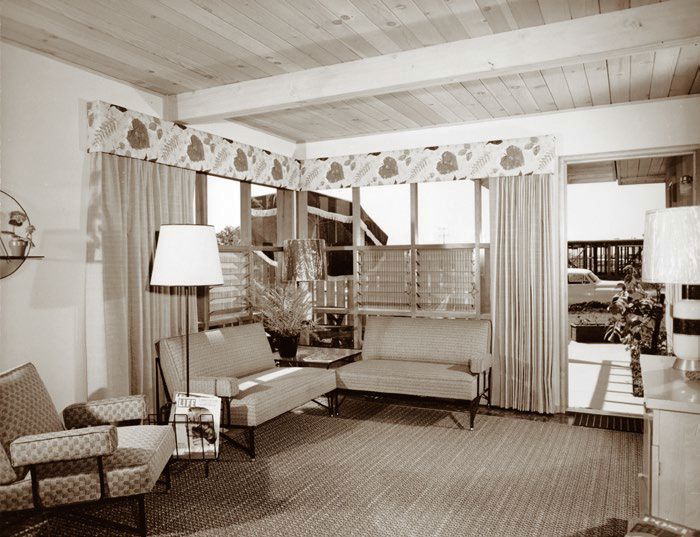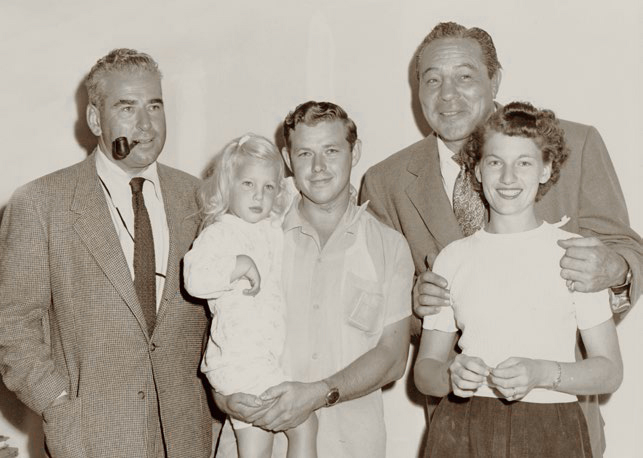King of the Flat-tops - Page 2
 |
|
|
 |
|
|
 |
|
|
But on top of that, builders had gotten to know Smith because, from the start of his career, he spread his ideas about building low-cost mass housing. He conducted 'shop talks' on the subject nationwide sponsored by the NAHB. He also met individually with builders who sought him out—including Joe Eichler.
Earl Smith told his son Geoff, "I got Eichler started." But, Geoff Smith adds, "'Getting him started' just means, I think, sitting down with him for lunch one day."
Earl's other son, Duncan, says the meeting with Eichler "was to go over what [Smith] was doing with the development of the slab, and of course the flat-topped roof. They both went over the construction details." Both sons worked for years with their dad in the family business. Earl Smith also had a daughter, Noel.
It's been said that Smith, who often sold his plans to other developers for their use, sold them to Joe Eichler. That is not certain, although some of Eichler's earliest homes in Sunnyvale resemble 'Flat Top' homes, with their wooden window surrounds, front façade trellises, and angled support poles at the entryways.
Today, Eichler is a legend and 'Flat Top' Smith is a forgotten legend. In at least one way, though, Smith succeeded more than Eichler did in accomplishing one of the goals proclaimed by progressive 20th century architects and thinkers. Where others talked about building modern housing for the working masses, Smith was actually doing it.
Eichler aimed most of his homes at middle-class people—and middle-class intellectuals, often enough.
Throughout his career, Smith sold homes to the working class. "He felt the need of the blue-collar worker, and also for the guy who came back from World War II," Duncan Smith says. "They needed houses."
"Dad always said anyone could build a custom house," Duncan adds, "but to design a small home like he did, you had to be pretty creative."
Smith adopted modern design not out of fondness for modern design but simply to build something simple, efficient, and cost effective.
"Henry Ford knew there was a 'Tin Lizzie' [Model T car's nickname] market," Smith told the Post. "But who makes Model T houses except us? We could build bigger ones…and make more money. But we'll keep making Model T houses to keep people happy just because no one else gives a damn about them."
And unlike the liberal Joe Eichler or Eichler's left-leaning architects, 'Flat Top' came at the issue from a politically conservative perspective.
"Most of us [homebuilders] waste too much time fighting the government," he told the Post. "We wouldn't have to worry so much about socialized housing if the industry itself put up houses the little guy could afford."
Earl Smith built flat-topped homes throughout Northern and Central California. His subdivisions went up throughout the Bay Area—near Richmond and Pittsburg, in Vallejo, Milpitas, and San Jose. He also reached as far north as Chico, Yuba City, "and Yreka I believe," Geoff says, and as far south as Turlock in the Central Valley and Salinas.
His sons said he built about 25,000 homes throughout his career. About 11,000 of them were flat-tops. He also built small apartment complexes.




